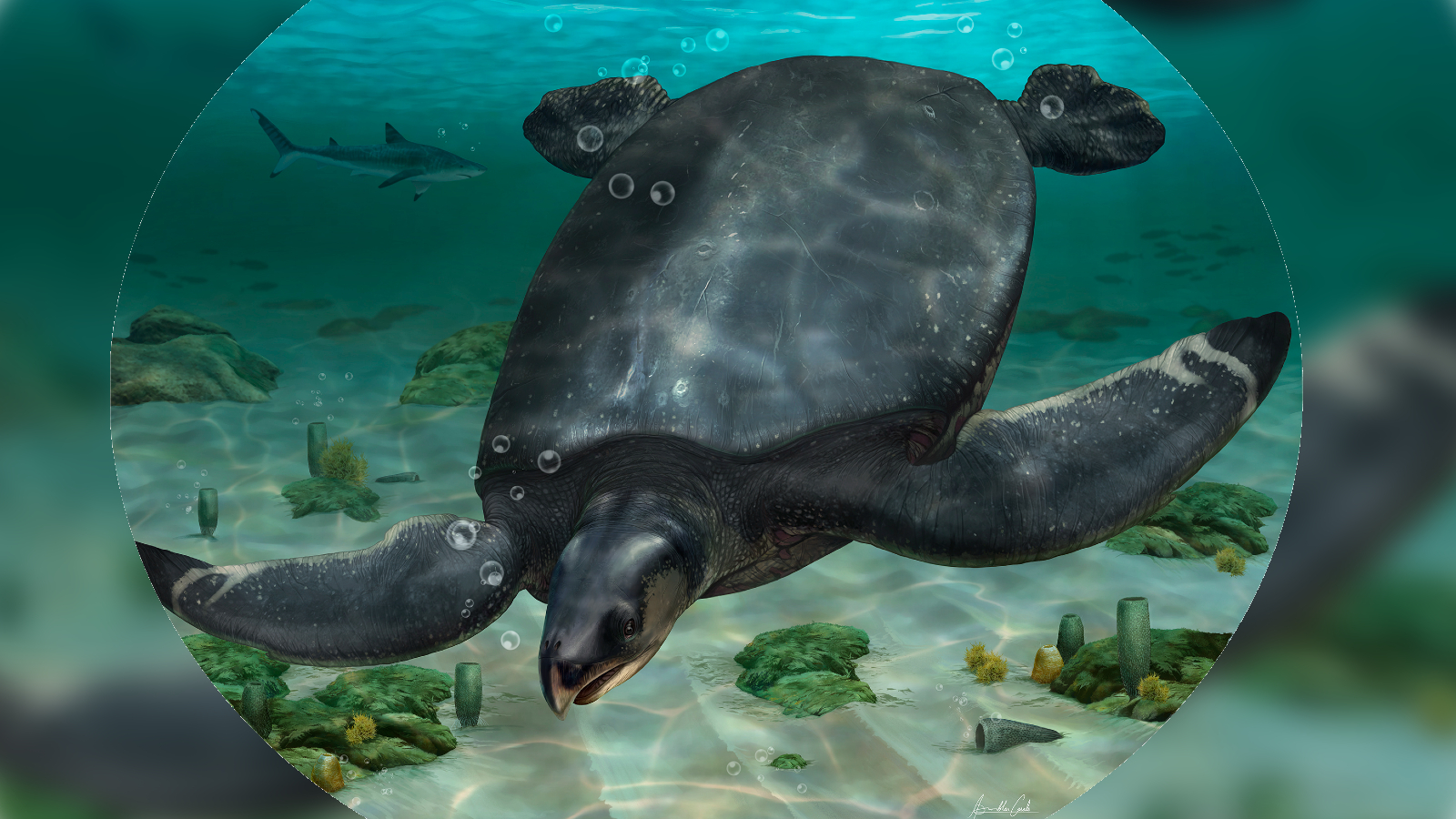Titanic 12-foot turtle cruised the ocean 80 million years ago, newfound fossils show
Researchers in Spain have unearthed a never-before-seen species of ancient marine turtle, the largest of its kind ever uncovered in Europe.

Paleontologists have unearthed an extinct, never-before-seen species of giant sea turtle in Spain. The titanic turtle likely had a body length of around 12.3 feet (3.7 meters) — more than double the size of modern marine turtles — and is the largest turtle species ever uncovered in Europe.
The new species, which researchers have named Leviathanochelys aenigmatica, was identified from a complete pelvis fossil and fragments of fossilized shell uncovered between 2016 and 2021 at the Cal Torrades locality in northeastern Spain, researchers said in a statement. The enormous turtle likely cruised around Europe's ancient oceans between 83.6 and 72.1 million years ago, during the Cretaceous period (145 million to 66 million years ago).
L. aenigmatica is just over twice the size of the largest living marine turtles, leatherback turtles (Dermochelys coriacea), which can reach up to 5.9 feet (1.8 m) long. However, the newly found gigantic turtle falls just short of the record set by the world's largest-ever turtle, the extinct Archelon ischyros, which had a maximum body length of 15 feet (4.6 m), according to the statement.
Fossils of ancient giant turtles like A. ischyros are predominantly found in North and South America and, until now, no European marine turtles larger than leatherbacks, living or extinct, have ever been discovered.
Related: Ancient turtle with a frog face sucked down its prey millions of years ago
The pelvis of L. aenigmatica not only hints at the ancient turtle's immense size but also provides clues about its evolutionary past. The bone has an unusual protrusion, potentially linked to the respiratory system, that is so unlike anything seen in modern or extinct turtles that the newly described species has been put into a new genus, according to the statement.


The discovery of L. aenigmatica, therefore, upends what researchers know about the evolution of gigantism in turtles because it suggests that there was more than one lineage of marine turtles that grew to such extreme sizes. It also hints that there may be other ancient giant turtle species waiting to be discovered.
Sign up for the Live Science daily newsletter now
Get the world’s most fascinating discoveries delivered straight to your inbox.
L. aenigmatica is not the only giant turtle discovery in recent years. In January 2021, researchers in Venezuela unearthed an almost completely intact 8-foot-long (2.4 m) shell belonging to a freshwater turtle, Stupendemys geographicus, that lived around 8 million years ago.
The new study was published online Nov. 17 in the journal Scientific Reports.

Harry is a U.K.-based senior staff writer at Live Science. He studied marine biology at the University of Exeter before training to become a journalist. He covers a wide range of topics including space exploration, planetary science, space weather, climate change, animal behavior and paleontology. His recent work on the solar maximum won "best space submission" at the 2024 Aerospace Media Awards and was shortlisted in the "top scoop" category at the NCTJ Awards for Excellence in 2023. He also writes Live Science's weekly Earth from space series.










